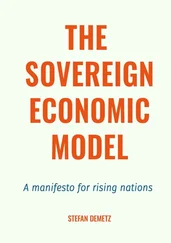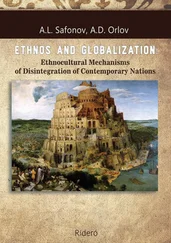The repartimiento , the forced labor draft, had never been abolished after independence, but now it was increased in scope and duration. It was institutionalized in 1877 by Decree 177, which specified that employers could request and receive from the government up to sixty workers for fifteen days of work if the property was in the same department, and for thirty days if it was outside it. The request could be renewed if the employer so desired. These workers could be forcibly recruited unless they could demonstrate from their personal workbook that such service had recently been performed satisfactorily. All rural workers were also forced to carry a workbook, called a libreta , which included details of whom they were working for and a record of any debts. Many rural workers were indebted to their employers, and an indebted worker could not leave his current employer without permission. Decree 177 further stipulated that the only way to avoid being drafted into the repartimiento was to show you were currently in debt to an employer. Workers were trapped. In addition to these laws, numerous vagrancy laws were passed so that anyone who could not prove he had a job would be immediately recruited for the repartimiento or other types of forced labor on the roads, or would be forced to accept employment on a farm. As in nineteenth- and twentieth-century South Africa, land policies after 1871 were also designed to undermine the subsistence economy of the indigenous peoples, to force them to work for low wages. The repartimiento lasted until the 1920s; the libreta system and the full gamut of vagrancy laws were in effect until 1945, when Guatemala experienced its first brief flowering of democracy.
Just as before 1871, the Guatemalan elite ruled via military strongmen. They continued to do so after the coffee boom took off. Jorge Ubico, president between 1931 and 1944, ruled longest. Ubico won the presidential election in 1931 unopposed, since nobody was foolish enough to run against him. Like the Consulado, he didn’t approve of doing things that would have induced creative destruction and threatened both his political power and his and the elite’s profits. He therefore opposed industry for the same reason that Francis I in Austria-Hungary and Nicholas I in Russia did: industrial workers would have caused trouble. In a legislation unparalleled in its paranoid repressiveness, Ubico banned the use of words such as obreros (workers), sindicatos (labor unions), and huelgas (strikes). You could be jailed for using any one of them. Even though Ubico was powerful, the elite pulled the strings. Opposition to his regime mounted in 1944, headed by disaffected university students who began to organize demonstrations. Popular discontent increased, and on June 24, 311 people, many of them from the elite, signed the Memorial de los 311, an open letter denouncing the regime. Ubico resigned on July 1. Though he was followed by a democratic regime in 1945, this was overthrown by a coup in 1954, leading to a murderous civil war. Guatemala democratized again after only 1986.
The Spanish conquistadors had no compunction about setting up an extractive political and economic system. That was why they had come all the way to the New World. But most of the institutions they set up were meant to be temporary. The encomienda , for example, was a temporary grant of rights over labor. They did not have a fully worked-out plan of how they would set up a system that would persist for another four hundred years. In fact, the institutions they set up changed significantly along the way, but one thing did not: the extractive nature of the institutions, the result of the vicious circle. The form of extraction changed, but neither the extractive nature of the institutions nor the identity of the elite did. In Guatemala the encomienda , the repartimiento , and the monopolization of trade gave way to the libreta and the land grab. But the majority of the indigenous Maya continued to work as low-wage laborers with little education, no rights, and no public services.
In Guatemala, as in much of Central America, in a typical pattern of the vicious circle, extractive political institutions supported extractive economic institutions, which in turn provided the basis for extractive political institutions and the continuation of the power of the same elite.
FROM SLAVERY TO JIM CROW
In Guatemala, extractive institutions persisted from colonial to modern times with the same elite firmly in control. Any change in institutions resulted from adaptations to changing environments, as was the case with the land grab by the elite motivated by the coffee boom. The institutions in the U.S. South were similarly extractive until the Civil War. Economics and politics were dominated by the southern elite, plantation owners with large land and slave holdings. Slaves had neither political nor economic rights; indeed, they had few rights of any kind.
The South’s extractive economic and political institutions made it considerably poorer than the North by the middle of the nineteenth century. The South lacked industry and made relatively little investment in infrastructure. In 1860 its total manufacturing output was less than that of Pennsylvania, New York, or Massachusetts. Only 9 percent of the southern population lived in urban areas, compared with 35 percent in the Northeast. The density of railroads (i.e., miles of track divided by land area) was three times higher in the North than in southern states. The ratio of canal mileage was similar.
Map 18 (this page) shows the extent of slavery by plotting the percentage of the population that were slaves across U.S. counties in 1840. It is apparent that slavery was dominant in the South with some counties, for example, along the Mississippi River having as much as 95 percent of the population slaves. Map 19 (this page) then shows one of the consequences of this, the proportion of the labor force working in manufacturing in 1880. Though this was not high anywhere by twentieth-century standards, there are marked differences between the North and the South. In much of the Northeast, more than 10 percent of the labor force worked in manufacturing. In contrast in much of the South, particularly the areas with heavy concentrations of slaves, the proportion was basically zero.
The South was not even innovative in the sectors in which it specialized: from 1837 to 1859, the numbers of patents issued per year for innovations related to corn and wheat were on average twelve and ten, respectively; there was just one per year for the most important crop of the South, cotton. There was no indication that industrialization and economic growth would commence anytime soon. But defeat in the Civil War was followed by fundamental economic and political reform at bayonet point. Slavery was abolished, and black men were allowed to vote.
These major changes should have opened the way for a radical transformation of southern extractive institutions into inclusive ones, and launched the South onto a path to economic prosperity. But in yet another manifestation of the vicious circle, nothing of the sort happened. A continuation of extractive institutions, this time of the Jim Crow kind rather than of slavery, emerged in the South. The phrase Jim Crow , which supposedly originated from “Jump Jim Crow,” an early-nineteenth-century satire of black people performed by white performers in “blackface,” came to refer to the whole gamut of segregationist legislation that was enacted in the South after 1865. These persisted for almost another century, until yet another major upheaval, the civil rights movement. In the meantime, blacks continued to be excluded from power and repressed. Plantation-type agriculture based on low-wage, poorly educated labor persisted, and southern incomes fell further relative to the U.S. average. The vicious circle of extractive institutions was stronger than many had expected at the time.
Читать дальше












